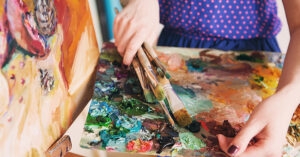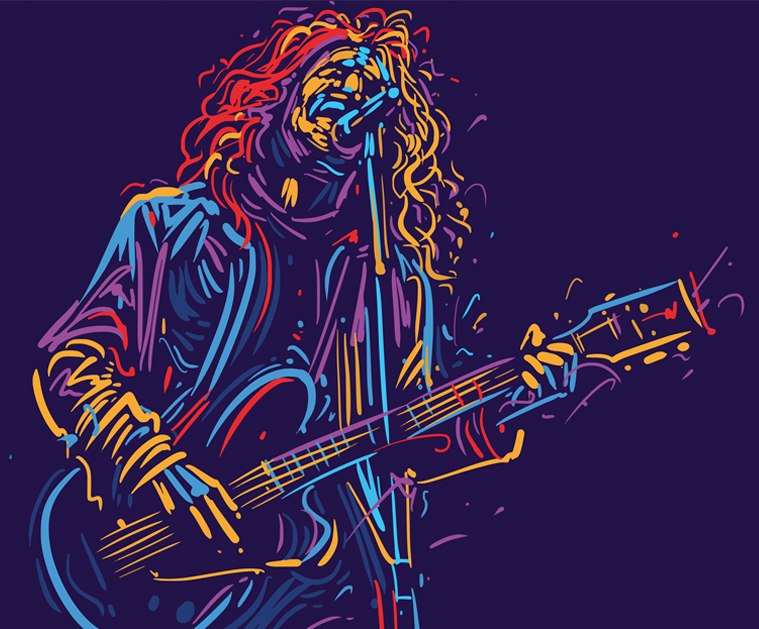The evolution of art through the ages has been a mirror reflecting the shifts in societal values, technological advancements, and cultural transformations.
This journey, encapsulated within the history of art movements, offers a vibrant tableau of humanity’s creative endeavor.
This article aims to navigate through the major art movements from the Renaissance to Abstract art, illuminating their distinct characteristics, pivotal figures, and enduring legacies.
The Renaissance (14th to 17th Century)
Emergence of the Renaissance
The Renaissance marked a period of rebirth in arts, culture, and intellect, primarily emanating from Italy. This era’s genesis was fostered by a blend of factors, including the rediscovery of classical philosophy, the rise of humanism, and significant advancements in science and exploration.
Characteristics of Renaissance Art
Renaissance art is celebrated for its pioneering use of perspective, creating an illusion of depth and space. It also saw artists like Leonardo da Vinci and Michelangelo embracing realism, human anatomy, and the natural world with unprecedented accuracy.
Notable Artists and Works
Leonardo da Vinci’s “Mona Lisa” and Michelangelo’s Sistine Chapel ceiling frescoes stand as monumental achievements of this era, embodying the Renaissance’s ideals of beauty, proportion, and humanism.
The Baroque (Late 16th to Early 18th Century)
Defining the Baroque
Emerging as a contrast to the Renaissance’s orderly beauty, the Baroque movement embraced extravagance. This was partly influenced by the Catholic Church’s Counter-Reformation, which sought to inspire faith through art’s emotional power.
Characteristics of Baroque Art
Baroque art is known for its dramatic use of light and shadow, intense emotional expressions, and dynamic compositions. Artists like Caravaggio employed these elements to draw viewers into the scene, making the divine feel accessible and real.
Neoclassicism (Mid-18th to Early 19th Century)
Revival of Classical Antiquity
Neoclassicism arose as a response to the perceived excesses of the Baroque and Rococo, drawing inspiration from the simplicity and purity of ancient Greek and Roman art. This movement coincided with the Enlightenment, which emphasized reason and science, reflecting in the art’s focus on harmony and proportion.
Hallmarks of Neoclassical Art
Artists such as Jacques-Louis David emphasized clarity, order, and symmetry, often portraying subjects from classical mythology and history with a moral or civic message.
Romanticism (Late 18th to Mid-19th Century)
The Romantic Spirit
Romanticism was a reaction against the rationalism of the Enlightenment and the strictures of Neoclassicism, emphasizing emotion, individualism, and the sublime beauty of nature.
Features of Romantic Art
This movement is characterized by its focus on dramatic landscapes, stirring historical scenes, and the exploration of intense personal emotions. Francisco Goya and Caspar David Friedrich are among the artists who vividly captured the Romantic spirit in their works.
Impressionism (Late 19th Century)
Breaking with Tradition
Impressionism marked a radical departure from traditional art forms, focusing on capturing fleeting moments and the effects of light on color. This movement laid the groundwork for the modern art that would follow, challenging conventions and setting the stage for artistic innovation.
Impressionist Techniques and Themes
Claude Monet, Edgar Degas, and Pierre-Auguste Renoir, among others, employed quick brush strokes and a bright palette to depict scenes of modern life and changing seasons, emphasizing the transient nature of reality.
Post-Impressionism (Late 19th to Early 20th Century)
Beyond Impressionism
While Post-Impressionism built on Impressionism’s foundations, artists like Vincent van Gogh and Paul Cézanne pushed boundaries further, introducing elements of geometric form and unconventional color schemes. This movement was crucial in the development towards abstraction in art.
Expressionism and Fauvism (Early 20th Century)
Expressionism: Art of Emotion
Expressionism emerged as a powerful mode of conveying emotional depth and subjective experiences, often through exaggerated and distorted forms. Edvard Munch’s “The Scream” exemplifies the movement’s intense emotional expression.
Fauvism: Wild Beasts of Color
Fauvism, led by Henri Matisse, is distinguished by its bold, vibrant colors and simplified forms. This movement emphasized painterly qualities and the use of color to represent emotions, laying foundational concepts for future art movements.
Cubism and Futurism (Early 20th Century)
Cubism: Deconstructing Reality
Pablo Picasso and Georges Braque revolutionized art with Cubism, deconstructing objects into abstracted forms and reassembling them from multiple perspectives. This fragmented approach challenged conventional perceptions of space and form.
Futurism: Movement and Modernity
Futurism celebrated technology, speed, and modern life, rejecting the past to embrace the dynamic future. This Italian movement created a unique blend of art and ideology, influencing not just art but also literature and music.
Dada and Surrealism (Early to Mid-20th Century)
Dada: Art of the Absurd
Dada arose amid the chaos of World War I, challenging conventional art forms and societal norms with its irreverence and nihilism. Marcel Duchamp’s “Fountain” exemplifies Dada’s challenge to traditional art by presenting a readymade urinal as art.
Surrealism: Dream and Reality
Surrealism, influenced by Freud’s theories of the unconscious, delved into dreams and the irrational. Artists like Salvador Dalí created bizarre, dream-like scenes that defy logic, exploring the depths of the human psyche.
Abstract Expressionism (Mid-20th Century)
The Rise of American Art
Abstract Expressionism signaled the shift of the art world’s center from Paris to New York post-World War II. This movement emphasized spontaneous, abstract forms, allowing artists like Jackson Pollock and Mark Rothko to explore emotion and spirituality through color and form.
Conclusion
The journey from the disciplined beauty of the Renaissance to the liberated expressions of Abstract art illustrates the endless innovation of the human spirit. Each movement within the history of art movements reflects a chapter in the ongoing story of societal evolution, mirroring the complexities, challenges, and triumphs of its time.
As we continue to explore the depths of creativity, the legacy of these movements enriches our cultural landscape, offering insights into our collective identity and the boundless possibilities of artistic expression.
In tracing these footsteps, we not only appreciate the aesthetic achievements of the past but also understand the foundational principles that continue to inspire contemporary art. The history of art movements, with its diverse array of styles, philosophies, and techniques, remains a testament to the enduring power of human creativity in shaping our world and expressing the inexpressible.
Organizations like East End Arts play a pivotal role in this ongoing journey. By fostering a vibrant community of artists, musicians, and educators, East End Arts continues the tradition of innovation and exploration that has always driven the arts forward.
Through our Art School and Music School, and galleries, and community events, East End Arts serves as a living bridge connecting the rich legacy of past art movements with the dynamic creativity of today’s artists.
As we celebrate and study the history of art movements, let us also support and engage with the institutions like East End Arts that ensure this history continues to grow, enriching our lives with new expressions of human creativity and vision.






